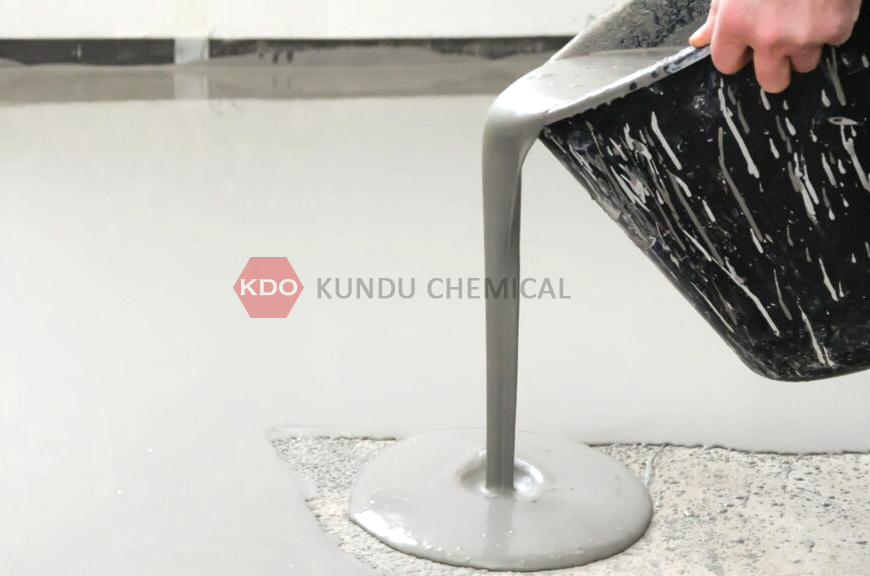- Time:2023/8/17Posted:SHANDONG KUNDU CHEMICAL CO.,LTD.
In the realm of modern construction, where precision and efficiency are paramount, various additives and materials have emerged to enhance the performance and workability of concrete. One such crucial component is a water reducer, a remarkable admixture that plays a pivotal role in shaping the properties and characteristics of concrete mixes. In this comprehensive article, we delve deep into the world of water reducers, unraveling their significance, functions, types, and the immense benefits they bring to construction projects.
What is a Water Reducer?
A water reducer, also known as a plasticizer or superplasticizer, is a chemical admixture meticulously engineered to improve the workability of concrete mixtures while concurrently reducing the water-cement ratio. This reduction in water content not only enhances the overall strength of the concrete but also contributes to its durability and resistance to various environmental factors.
Key Functions of Water Reducers
Water reducers are multifaceted additives that offer an array of functions, making them indispensable in the construction industry. Here are some of the primary roles they fulfill:
1. Improved Concrete Workability
Water reducers significantly enhance the workability of concrete, ensuring that it can be easily mixed, placed, and finished. This improved workability translates to better compaction and reduced voids within the concrete matrix, ultimately leading to higher structural integrity.
2. Higher Strength in Concrete
By reducing the water-cement ratio, water reducers contribute to the development of concrete with higher compressive strength. This strength is vital for structural stability and longevity, especially in critical applications such as bridges, high-rise buildings, and industrial facilities.
3. Durability Enhancement of Concrete
The reduced permeability achieved through the use of water reducers results in concrete that is more resistant to moisture penetration, chemical ingress, and freeze-thaw cycles. This increased durability extends the lifespan of structures, minimizing maintenance and repair costs.
4. Decreased Segregation and Bleeding in Concrete
Water reducers play a key role in minimizing the undesirable phenomena of segregation and bleeding in fresh concrete. Segregation refers to the separation of coarse aggregates from the concrete mix, while bleeding involves the upward movement of excess water. Both can negatively impact the homogeneity and overall quality of the concrete.

Polycarboxylate Superplasticizer (PCE)
Types of Water Reducers
Water reducers come in various types, each catering to specific construction requirements and conditions. Some of the common types include:
1. Normal Water Reducers
These water reducers are designed to provide a balanced enhancement of workability and strength. They are ideal for general construction projects where a moderate level of plasticity and strength is desired.
2. Mid-Range Water Reducers
Mid-range water reducers offer a more controlled level of workability and strength improvement. They are particularly useful in projects that require a specific balance between fluidity and cohesion, such as architectural concrete.
3. High-Range Water Reducers (Polycarboxylate Superplasticizers)
Polycarboxylate Superplasticizers deliver exceptional water reduction, resulting in highly workable and flowable concrete. They are often employed in scenarios where intricate shapes, congested reinforcement, or self-consolidating concrete is needed.
Benefits of Using Water Reducers
The utilization of water reducers yields a plethora of benefits that elevate the quality and performance of concrete structures:
1. Enhanced Project Efficiency
Water reducers facilitate easier pumping, placing, and finishing of concrete, streamlining the construction process and reducing labor requirements.
2. Optimized Concrete Performance
The improved workability, strength, and durability achieved through water reducers lead to concrete that can withstand the rigors of the environment, ensuring a longer lifespan.
3. Eco-Friendly Construction
By reducing the water content in concrete mixes, water reducers contribute to a decrease in overall water consumption, aligning with sustainable construction practices.
4. Cost Savings
The higher strength and reduced maintenance needs of structures constructed with water reducers result in long-term cost savings for project owners and stakeholders.
In Conclusion
The incorporation of water reducers into concrete mixes is a testament to the constant evolution and innovation within the construction industry. These versatile additives empower engineers and builders to create structures that stand the test of time, offering unparalleled strength, durability, and performance. From enhancing workability to boosting strength, water reducers have become an indispensable tool, driving the advancement of modern construction practices.
If you want to read more information about water reducers, just visit (https://www.kdochem.com/water-reducer.html).





